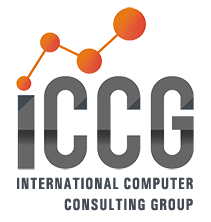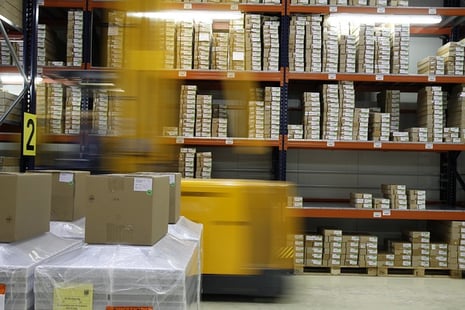Warehouse management systems (WMS) are essential for efficiently managing the operations of a warehouse. These systems can help streamline processes, optimise inventory levels, and improve accuracy. However, by ensuring your WMS can exploit hyper-automation, your WMS can be enhanced to deliver even more value while continuing to lower operational costs.
So, what do we mean by hyper-automation?
Hyper-automation can be defined as the combination of advanced technologies such as artificial intelligence, machine learning, and robotics to automate and optimise tasks that were previously done manually. By leveraging these technologies, businesses can significantly improve the efficiency and accuracy of their operations while also reducing their labour costs.
One of the main benefits of hyper-automation is that it can significantly enhance the efficiency and accuracy of warehouse operations. For example, by using robotics to automate the process of picking and packing, businesses can significantly reduce the time it takes to fulfil orders while also reducing the risk of errors. Similarly, by using artificial intelligence to analyse data and make decisions, businesses can make more accurate and informed decisions about inventory management, such as when to reorder stock and how much to order.
Furthermore, hyper-automation can also help businesses optimise their warehouse layouts and processes. By analysing data on the volumetrics, demand and movement of goods within the warehouse, artificial intelligence algorithms can identify inefficiencies and recommend changes to improve the flow of goods taking “slotting” as was and putting it on steroids. This can help businesses reduce the time it takes to move goods through the warehouse and double-handling, which can in turn increase the speed of order fulfilment and reduce the risk of errors.
Another benefit of hyper-automation is that it can help businesses reduce their labour costs. By automating tasks that were previously done manually, businesses can reduce their reliance on human labour, which can significantly reduce their operating costs over time. For example, by using robotics to automate the process of picking and packing, businesses can reduce the number of workers needed to fulfil orders, which can in turn reduce their labour costs. Please see my previous post on automation and Warehouse Control Systems.
Hyper-automation can also improve the safety of warehouse operations. By automating tasks that were previously done manually, businesses can reduce the risk of workplace accidents and injuries. For example, by using robotics to handle heavy or dangerous goods, businesses can reduce the risk of workers being injured while lifting or moving goods.
Similarly, by using artificial intelligence to optimise warehouse layouts and processes, businesses can reduce the risk of accidents caused by human error. For example, by using algorithms to identify potential hazards and recommend changes to the layout of the warehouse, businesses can reduce the risk of accidents caused by workers colliding with each other or with equipment.
Finally, hyper-automation can improve customer satisfaction by improving the speed and accuracy of order fulfilment. By using robotics to automate the process of picking and packing, businesses can significantly reduce the time it takes to fulfil orders, which can in turn improve customer satisfaction. Similarly, by using artificial intelligence to optimise inventory management, businesses can ensure that they have the right products in stock at the right time, which can help them fulfil orders more quickly and accurately.
In conclusion, hyper-automation is a powerful suite of tools that can significantly extend the capabilities of a WMS and reduce the overall operating costs of a warehouse. By leveraging advanced technologies such as artificial intelligence, machine learning, and robotics, businesses can improve the efficiency and accuracy of their operations, reduce labour costs, improve safety, and enhance customer satisfaction. Hyper automation drives hyper-productivity.
And, as always, contact ICCG to help provide you with insight and information. Schedule a complimentary consultation to review your questions.


